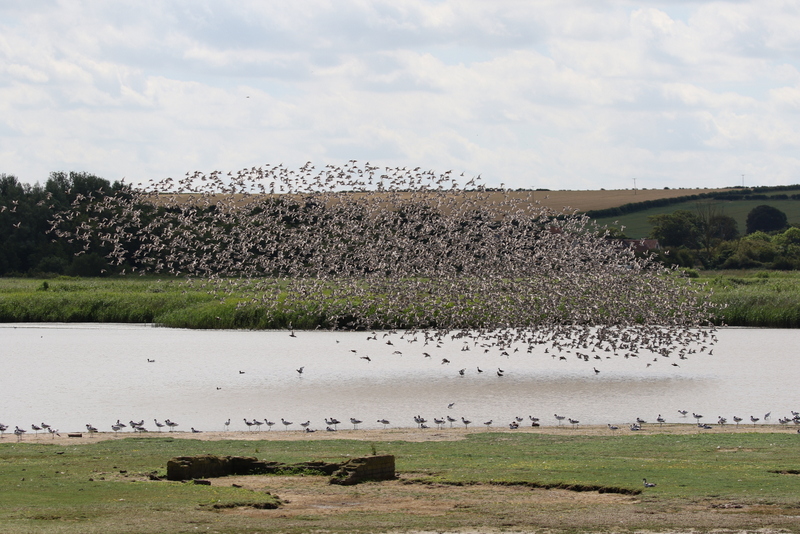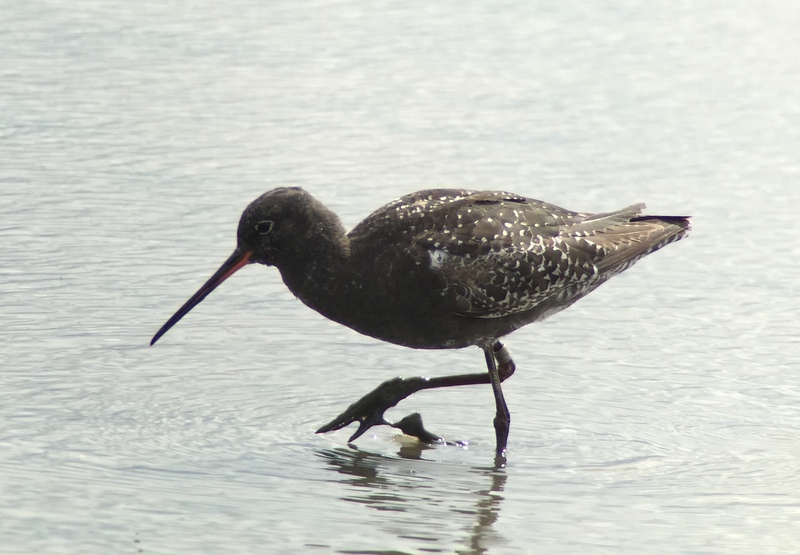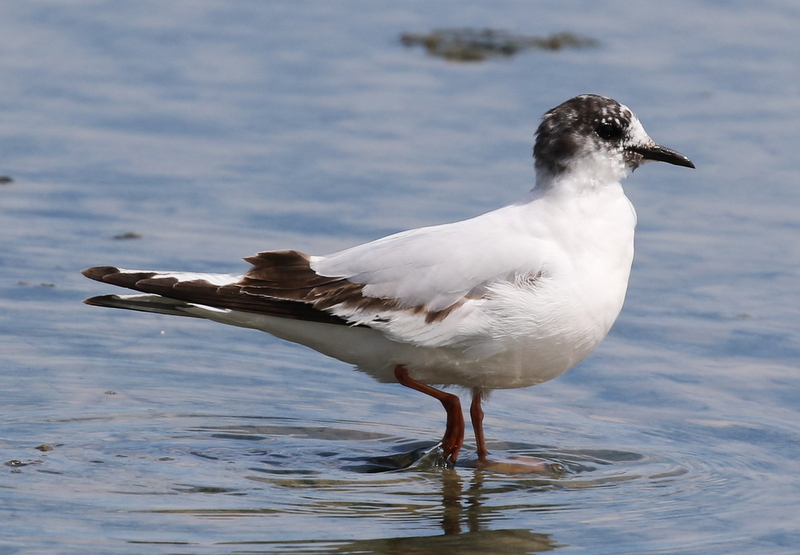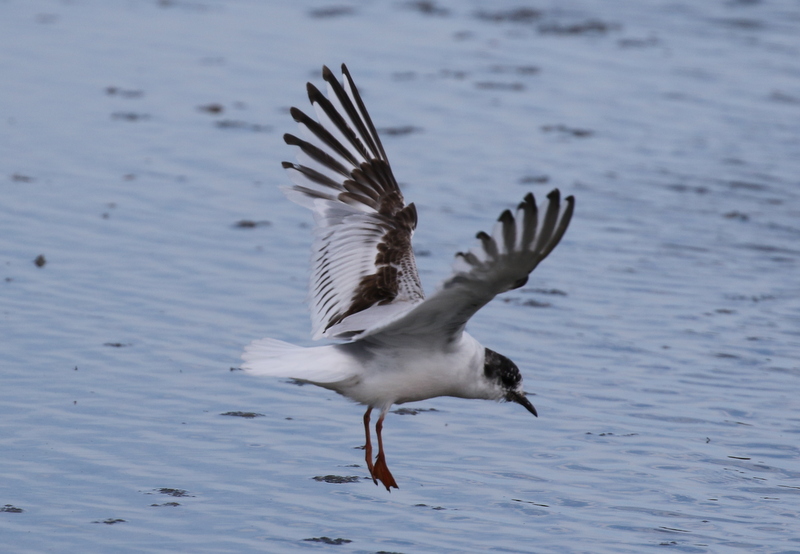While it barely seems like summer yet, particularly given the weather this year, autumn has already started for waders. Even from early June, the first Curlews started to trickle back and the number and variety of returning waders has steadily increased since. These earliest returnees are assumed to be non-breeders or failed breeders.
It is not unusual to find flocks of (Red) Knot building up on the coast at this time of year, many of which appear to be 1st summer birds (which do not breed in their first year, and retain grey non-breeding plumage through the summer). On 15th June a Great Knot was discovered in with a flock of several thousand Knot at Titchwell. Breeding in NE Siberia and wintering in Australia and SE Asia, this was only the fifth to be identified in the UK and the second in Norfolk following one at Breydon Water in July 2014.
Fortunately it has stayed around and I have been lucky to see it several times now, most recently today. It can roam quite widely, feeding on the mussel beds on the beach at low tide between Titchwell and Old Hunstanton and roosting either on Scolt Head or, more conveniently, on the freshmarsh at Titchwell. This was where it was today.
Noticeably larger than the Knot and longer-billed, heavier bodied with a rather small head, the Great Knot stands out. Its plumage is also very different from the Knot, most of which are grey but a small number of which are still in rusty-red breeding plumage. The Great Knot is heavily marked with black on its breast, breaking up into black spots on its flanks. The upperparts are also blackish but with distinctive chestnut-based feathers in the scapulars. A smart bird!
 Great Knot – a smart summer adult in with the flock of mostly grey Knot
Great Knot – a smart summer adult in with the flock of mostly grey Knot
The flock have regularly been spooked by a Peregrine and today was no exception. As the Peregrine drifted overhead, the flock of Knot shifted nervously before bursting into the air and whirling round in a tight flock, with a whirring of wings, then settling back down in the shallow water and walking back en masse onto the island.
 Knot – the flock whirled round when spooked by a Peregrine overhead
Knot – the flock whirled round when spooked by a Peregrine overhead
The surprise of the day was a single Curlew Sandpiper which appeared with the Knot before moving over to one of the islands to feed on its own. The first of the autumn, again this was rather a grey bird lacking the rusty underparts of a typical summer adult, perhaps a first summer. Spotted Redshanks are always a feature of this time of year, as the adults return in their smart black breeding plumage before moulting rapidly. Today, 6 were roosting out in the middle of the freshmarsh. Last week, one of them, a returning Dutch-ringed bird, was much more obliging feeding close to the main path. Up close, it is just starting to get some white speckling in its black underparts.
 Spotted Redshank – still mostly in smart black breeding plumage
Spotted Redshank – still mostly in smart black breeding plumage
All the breeding waders are still present too. Lots of Avocets including several youngsters at various stages of development. The Little Ringed Plovers also have fully-grown juveniles. Plus the usual Redshanks and Oystercatchers.
The other highlight of the day was a 1st summer Little Gull. At first asleep on one of the islands, when it awoke it flew over to the mud in front of Island Hide to feed. Hurrying round we were treated to point blank views of this dainty little gull. It walked up and down, picking for insects on the water’s surface, occasionally being chased off by the local Moorhens and juvenile Black-headed Gulls. Two Mediterranean Gulls dropped into the freshmarsh as well briefly, a smart summer adult and a 2nd summer with black in the wing tips.

 Little Gull – this 1st summer performed for us in front of Island Hide
Little Gull – this 1st summer performed for us in front of Island Hide
Ducks are also starting to return, with several more Teal in particular now in evidence, along with the regular resident species. However, this is the time of year when they moult and the returning drakes rapidly adopt the drab female-like eclipse plumage. A quick detour round via Patsy’s Reedbed provided seven Red-crested Pochard, a mixture of moulting males, an eclipse male (still with bright coral red bill) and a couple of females.
All in all, not bad for a morning’s outing!
















